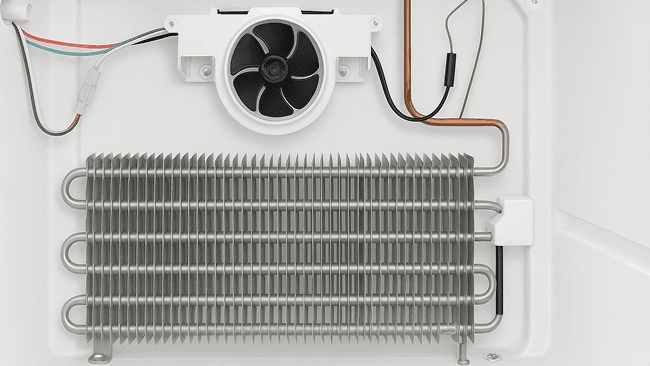How to Diagnose a Broken Fridge Like a Pro
We have a service call. I'm not sure my refrigerator is working. And of course, oftentimes they just say it's not working and that we don't get much description. So how should this work? This is a side by side. You must have a thermometer and we'll check the temperature. So on the cool side in the freezer, I.
It should be minus 5, 10, 15, 20 degrees, maybe up to 10 degrees. If your freezer is at 20 degrees, 30 degrees, that means it's not working. So what I'm gonna do is open the door very quickly, get my thermostat ready.
It's minus 27 degrees. Okay? That means that this is working perfectly. Now let's go to the fresh food compartment.
This is 32, 35 degrees. Perfect. That means both things are working and enough air is getting from the freezer compartment into the fresh food compartment. Refrigerators are designed to have a heat load. In other words, be full of food, but not stuffed full of food. So the freezer is working temperature wise, the refrigerator is working temperature wise.
Now, of course, if you have a dispenser, we can check and make sure that the ice works. The water works, it locks, everything works the way it's supposed to. Sometimes you'll have a dispenser that no longer dispenses water and inside the door right here, you'll have a water hose that comes from the bottom up through the door in through the dispenser and the hose in here gets frozen.
So there's a couple of things you can do, and this is just something I've learned in the field is you can take. Foam, like say cushions or something that's very insulating and stuff it in the freezer door, so no cold air can leak out. Leave this door open. Take everything here and put it in the freezer and you can even get hand warmers or a little heating pad.
Plug it in and put it on here. This will be safe because all of the cold air is trapped in the freezer, and then it will melt the frozen line inside, and then you don't have to move and relocate all the residents food. So if this is below zero, negative 5, 10, 15, 20, 30, perfect. Sometimes these get frozen after that.
Run several cups of water to make sure that the water coming through will continue to melt. Any little pieces of ice that are in the line, and it may sputter and it may fault a little bit, but you're on the right track. And then check everything here and make sure it works. So again, far below zero. 30 to 40 degrees, make sure the lights come on, the shelves work, and the residents actually have food in there.
If there's no food in there, everything is gonna start to freeze, uh, and especially the lines in the doors. So make sure all the shelves work, everything works. It's stored the way it's supposed to be. The trays come out nice and smoothly. And as interesting or surprising as it may seem, very often, residents don't know how to use their appliances to the best of their capacity.
So part of our role oftentimes is just helping people understand how to get the best and make the most out of their appliances. So check the temperatures, make sure everything works, your residents, and you'll appreciate it.




